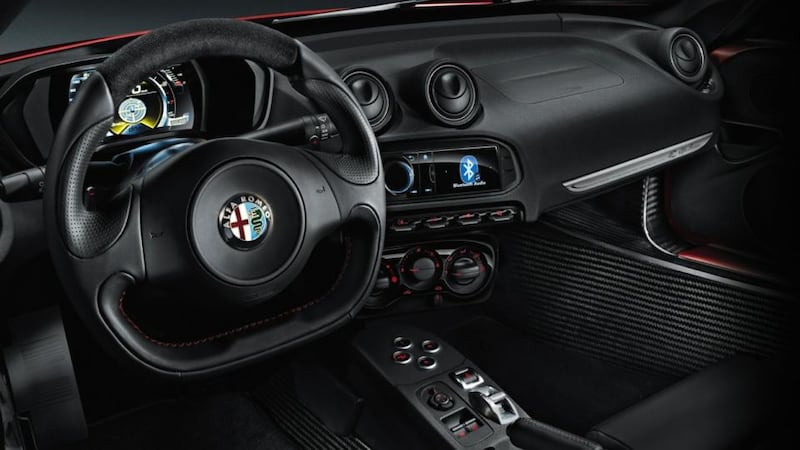Nostalgia is a dangerous thing, especially when it is inherited rather than actual. There is a sort of tribal, genetically transferred nostalgia amongst car nuts when it comes to Alfa Romeo. How else can one explain the continued survival of a car company whose global sales currently register fewer than 6,000 cars a month? It is undeniable, though: misty, sepia memories of experiences few of us have actually had dominatethe Alfa legend. Nuvolari, Fangio, Farina, Andretti and Vacarella behind the wheel. The famous badge featuring the crest of Milan and a man being eaten by a snake (taken from Milan's 14th-century rulers, the Visconti family, if you were wondering). The GTV. The Spider. The T33. The Alfasud. How we loved them all.
And how much we have fallen out of love with such a fabulous brand. There were solid reasons for this. Rust and unreliability plagued Alfa in the 1970s and early 1980s. Nowadays, it’s no more or less reliable than any other European brand in real terms, but lacklustre models have seen sales plummet, and so Alfa is in dire need of yet another reinvention, yet another regeneration.
Low, dramatic and high-tech The 4C is supposed to be the herald of this, and you cannot argue that it does that job spectacularly well. Descending on Kildare's Mondello Park race track like some bright red carbon-fibre seraphim, it seems to bring at last good tidings of Italian joy. It is low, dramatic and high-tech. No need for nostalgia here – with its carbon-fibre chassis and mid-mounted four-pot turbo engine, the 4C is bang up to date.


Bang up is as good as description of its drive as you'll find too. Those hoping for a sophisticated Porsche rival will be stumped by the 4C's raw, race-ready performance. That 240hp engine (badged in classic Alfa style as a 1750) screams and bellows behind your head and feels as if it's been bolted directly to your spine. The acceleration comes in great turbocharged huffs and puffs and the TCT paddle-shift gearbox is as good as seamless when you're cracking on. Best of all is the unassisted steering, full of feel even if its weighting feels odd to palms used to slick sophistication. The 4C is what happens when Alfa truly cuts loose, and boy does it feel great to be around when it does so.
It's also, in many ways, something of a bargain. Yes, €69,000 is hardly cheap, but to get a Porsche with equivalent performance you're looking at €85,000 for a Cayman S. Yes, that Cayman is more useable and refined but who cares about such niceties when you're bumping into the rev-limiter in fourth? And if you want a mid-engined, carbon-chassis rival . . . McLaren 650S, anyone?
Alfa resurrection
Perhaps of greater import, the arrival of the 4C signals the temporary death and resurrection of Alfa Romeo. The small, front-drive Mito (Mini rival) and Giulietta (Golf rival) have been updated and will be pushed hard by Alfa to keep its sales ticking over. They are, however,merely the tasters for a much fuller menu of all-new rear-drive and all-wheel-drive models, cars to compete head-on with the likes of the BMW 3 Series and Audi A6, as well as – whisper it – Alfa's first ever SUVs. The first one, a 3 Series rival called the Giulia, is still a year away, though.
Will any of this matter? Will anyone care? Can Alfa, for all the 4C’s spine-tingling nature and Fiat’s €5 billion investment in its new models, actually convince a significant coterie of global – and indeed Irish – customers to cross that threshold with their cheque-signing hands poised?
Gerry Clarke is Alfa's new country manager for Ireland, and he told The Irish Times: "Obviously, the important thing is that we start featuring back on people's shopping lists and that's down to product. The technology we've built into these cars, is something that hasn't been experienced in this market for far too long. I think we have to focus and show the customers that they're getting better value for money. There's an improvement in CO2, bringing down the tax bands for the cars, which will help us. We've started rebuilding the dealer network again and making sure that the aftersales experience is better than it has been in recent times. We need to make sure that the whole operation is a reflection of the investment in the brand."
Trans-European brand Interestingly, Clarke would not be drawn on how many sales are needed to keep Alfa Romeo as a viable entity in Ireland. He spoke instead of seeing the brand in a trans-European sense, and as a partner to Fiat's other expansionist brand, Jeep. "We don't comment on rumours and speculation," he said, "and that's exactly what those stores of us leaving Ireland were. We're here to stay."
Brave words for a brand that has sold just a handful of cars in this market in recent years. There are signs of hope. Alongside the 4C’s more dramatic efforts, there are also some significant improvements to the Giulietta hatchback, which is now far quieter, comfier, more tax-efficient and better equipped than before. Should you consider one? Would we recommend one? Tough questions, both. Clearly, residual values are going to need support and buyers will be sceptical for a while. For all the sheer joy of the 4C, the meat-and-potatoes Giulietta has the donkey work to do, and it’s going to be tough going against the likes of the Golf. Still, it’s an Alfa, a gorgeous one, that’s just about sensible enough for you to buy and for us to recommend.
Take a risk and give in to the nostalgia?















